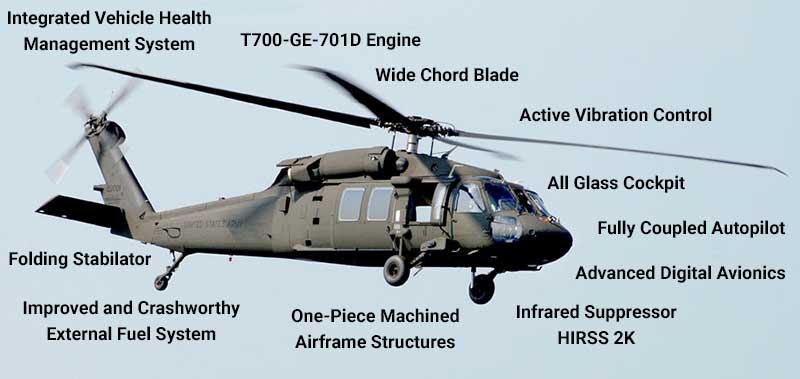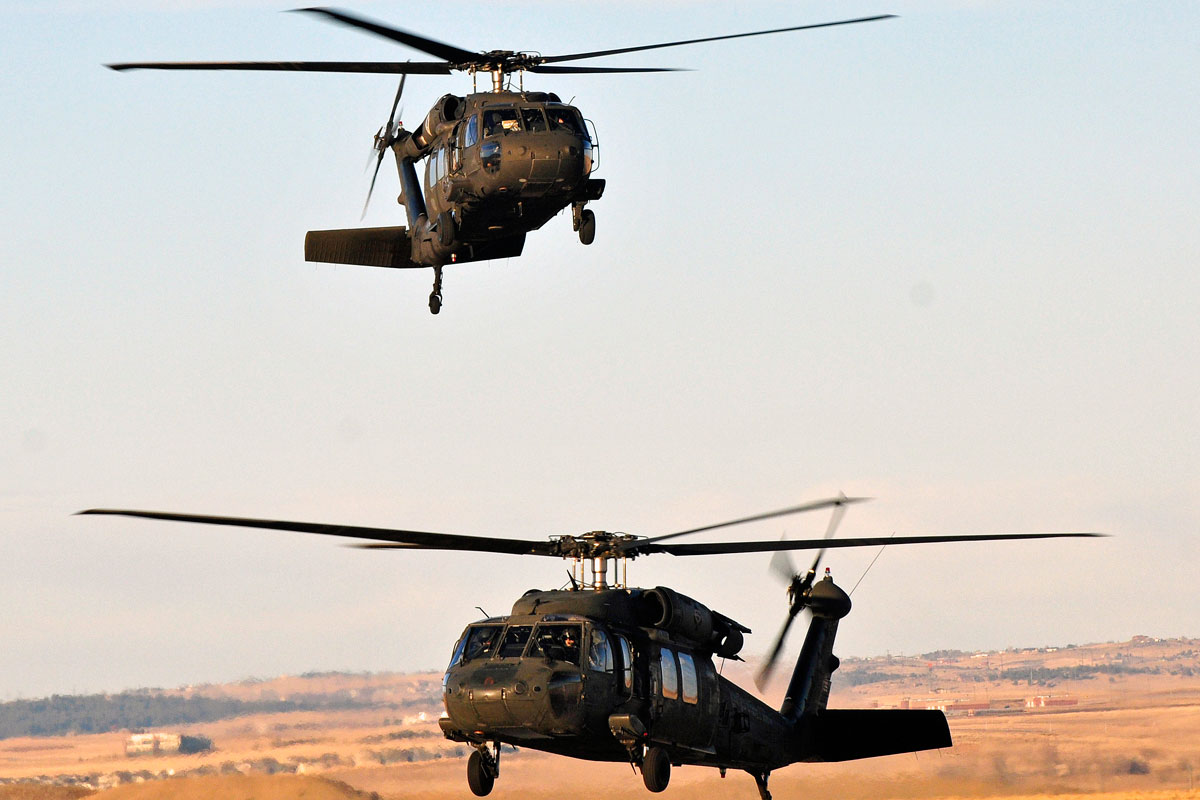Trip Ready: Making Sure Optimum Problem for Your UH 60 Helicopter
Trip Ready: Making Sure Optimum Problem for Your UH 60 Helicopter
Blog Article
Navigating Uh 60 Helicopter Regulations and Conformity Needs

Regulatory Structure Review
The governing structure regulating UH-60 helicopter operations encompasses a complex collection of requirements and guidelines established by aeronautics authorities. These guidelines are created to guarantee the reliable and risk-free operation of UH-60 helicopters in numerous atmospheres. The Federal Air Travel Administration (FAA) plays a main function in establishing and applying these guidelines, which cover a wide variety of functional elements, including airworthiness criteria, pilot certifications, upkeep demands, and operational treatments.
Compliance with these laws is necessary for helicopter operators to maintain the highest degree of safety and security and functional integrity. Failing to comply with these guidelines can lead to significant effects, consisting of accidents, injuries, and regulative sanctions. Helicopter operators have to stay notified concerning the most current governing developments and make sure that their procedures are in full compliance with all relevant rules and requirements.
Airworthiness Assessments and instructions
Among the regulatory framework governing UH-60 helicopter operations, an important emphasis pushes conformity with Airworthiness Directives and performing comprehensive evaluations to support security requirements and operational reliability. Airworthiness Directives (ADs) are issued by aviation authorities to deal with hazardous conditions in aircraft, including the UH-60 helicopter, and required details activities to be taken by proprietors or operators. Compliance with ADs is obligatory, and failure to adhere to these instructions can cause significant effects, consisting of grounding of the aircraft.
Regular inspections are paramount to ensuring the airworthiness of UH-60 helicopters. These inspections incorporate a series of checks, from routine daily examinations carried out by pilots before and after trips to a lot more extensive scheduled upkeep assessments executed by licensed auto mechanics. Additionally, unique assessments may be called for based on details conditions or occurrences. By sticking to a stringent examination program, drivers can find and deal with possible problems promptly, consequently enhancing the security and reliability of UH-60 helicopter procedures.
Pilot Qualifications and Training

Pilot training for UH-60 helicopters is comprehensive and covers a variety of subjects, including airplane systems, emergency treatments, navigation, and mission-specific training. In addition, pilots undergo simulator training to exercise various emergency situation situations in a regulated atmosphere. This training aids pilots establish the necessary abilities to handle difficult situations successfully.


Moreover, recurring training and specialist advancement are crucial for UH-60 pilots to stay present with the most recent guidelines, innovation, and finest practices. By buying pilot credentials and training, operators can enhance safety, maximize performance, and guarantee compliance with governing demands in the operation of UH-60 helicopters.
Functional Limitations and Demands
Pilot qualifications read and training act as the structure for understanding the functional restrictions and requirements related to UH-60 helicopter procedures (uh 60). These operational constraints are established to make certain the security of the crew, travelers, and the aircraft itself. Functional restrictions might include factors such as weather, weight constraints, altitude restraints, and operational borders. It is vital for pilots to be well-versed in these constraints to make informed choices during trip procedures. Additionally, conformity requirements, such as sticking to specific flight courses, communication methods, and emergency procedures, are essential for preserving functional safety and regulative conformity. Pilots should remain current with all operational constraints and requirements with normal training, briefings, and evaluates to minimize risks and make sure safe and efficient UH-60 helicopter operations. By prioritizing adherence to these functional guidelines, pilots can boost the overall security and efficiency of their goals while upholding regulative requirements.
Emergency Situation Treatments and Conformity Testing
Efficient emergency procedures and thorough compliance screening are essential parts of preserving operational safety and regulatory adherence in UH-60 helicopter procedures. Emergency situation procedures encompass protocols for numerous circumstances, including engine failures, fires, hydraulic issues, and extra. Pilots and crew members should be well-versed in these treatments to respond swiftly and effectively in emergency situations. Routine compliance screening makes sure that the helicopter satisfies all regulatory needs set forth by aviation authorities. This screening includes comprehensive inspections, checks, and analyses to verify that the aircraft is airworthy and in conformity with all appropriate laws.
Conformity testing additionally includes devices onboard the UH-60, such as interaction systems, navigation tools, and safety gear. Making certain that all devices is operating correctly and satisfies governing standards is necessary for safe operations. In addition, compliance testing may entail simulations of emergency situations to examine the crew's action and the helicopter's efficiency under stress. By prioritizing emergency situation treatments and compliance testing, UH-60 operators can alleviate threats and demonstrate their commitment to security and regulative conformity.
Verdict
Finally, visit adherence to regulatory framework, compliance with airworthiness directives, pilot certifications and training, operational restrictions, and emergency procedures are necessary for browsing the laws and needs of running a UH-60 helicopter. uh 60. It is crucial for drivers to focus on safety and security and guarantee full compliance with all suitable guidelines to maintain the airworthiness and functional honesty of the airplane
Browsing the regulative landscape surrounding UH-60 helicopter operations requires Visit Website a nuanced understanding of the elaborate web of guidelines and compliance demands.Compliance with these regulations is essential for helicopter drivers to keep the highest possible degrees of security and operational honesty.Amidst the regulative structure controling UH-60 helicopter operations, a vital focus exists on compliance with Airworthiness Directives and conducting thorough examinations to maintain safety criteria and functional reliability.Reliable emergency treatments and complete compliance screening are vital components of keeping functional safety and security and regulatory adherence in UH-60 helicopter procedures. Regular conformity testing makes certain that the helicopter satisfies all governing demands established forth by aviation authorities.
Report this page